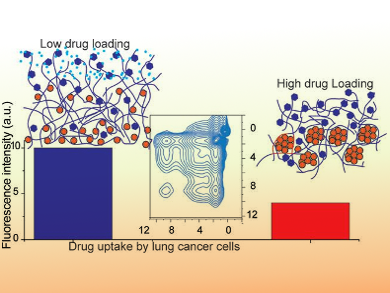It is widely assumed that drug carriers should contain as much drug as possible. This makes sense as the drug carrier is really just the container that needs to be cleared from the body again after use. However, the drug itself can affect the drug carrier and change its interaction with the biological environment.
Aditya Rawal, Martina Stenzel, University of New South Wales, Sydney, Australia, and colleagues have prepared two polymeric micelles that were coated with fructose as a bioactive group that can be recognized by certain breast cancer cells. One set of micelles was filled with a large amount of platinum-based drugs in the core, while the other had only a small amount of the active substance. Interestingly, the micelles with lower drug loading displayed better uptake by cancer cells and higher cytotoxicity, which was in contrast to expectations.
Solid-state NMR was used to show that a larger drug loading led to dehydration of the micelles, which weakened the interaction between the fructose on the micelle surface and the cell wall. While lower drug loading content will not generally enhance the biological activity of such micelles, the researchers have shown that filling the micelles with drugs can affect characteristics such as polarity, which in turn may be detrimental to their activity.
- The Effect of Drug Loading on Micelle Properties: Solid-State NMR as a Tool to Gain Structural Insight,
Manuela Callari, Paul L. De Souza, Aditya Rawal, Martina H. Stenzel,
Angew. Chem. Int. Ed. 2017.
DOI: 10.1002/anie.201701471




